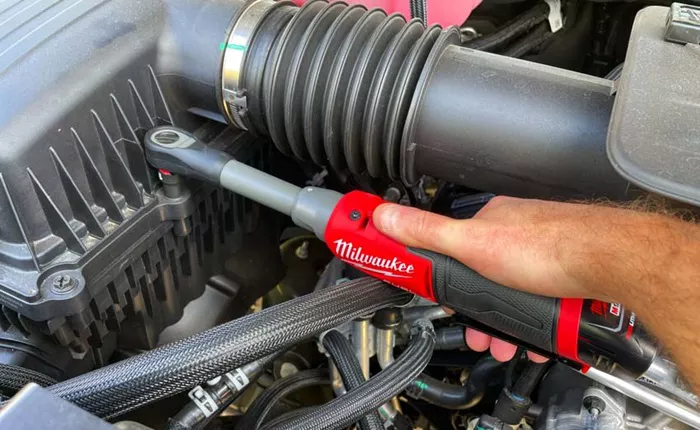Maintaining your Milwaukee ratchet is essential to ensure its longevity and optimal performance. Proper care not only extends the life of your tool but also keeps it operating smoothly and efficiently. Here’s a comprehensive guide on how to care for and maintain your Milwaukee ratchet.
1. Regular Cleaning
Why Cleaning Matters
Dirt, grime, and debris can accumulate in your ratchet, affecting its performance and potentially causing damage. Regular cleaning helps maintain the tool’s functionality and prevents the buildup of harmful particles.
Cleaning Process
Disassemble if Necessary: For thorough cleaning, carefully disassemble your ratchet according to the manufacturer’s instructions. This allows you to clean each part individually.
Use a Soft Brush: Gently brush away dirt and debris from the ratchet’s exterior and interior components.
Apply a Cleaning Solution: Use a mild detergent or a tool-specific cleaner to remove stubborn grime. Avoid harsh chemicals that could damage the tool’s finish.
Dry Completely: Ensure all parts are completely dry before reassembling to prevent rust and corrosion.
2. Lubrication
Importance of Lubrication
Lubrication is crucial for reducing friction and wear on the moving parts of your ratchet. It ensures smooth operation and extends the tool’s lifespan.
Lubrication Tips
Use the Right Lubricant: Apply a light machine oil or a lubricant recommended by Milwaukee. Avoid using heavy oils or greases that could attract dust and debris.
Apply Sparingly: Use only a small amount of lubricant to avoid over-application, which can lead to excess buildup and operational issues.
Lubricate Moving Parts: Focus on areas where the ratchet’s gear mechanism and drive components make contact.
See also: Milwaukee Laser Level Review: Key Features And Innovations
3. Inspect for Wear and Damage
Why Inspection is Crucial
Regular inspections help identify signs of wear and potential damage before they lead to tool failure. Early detection allows for timely repairs or replacements.
Inspection Checklist
Check Gear Teeth: Look for signs of wear or damage on the gear teeth. Worn teeth can affect the ratchet’s performance and may require replacement.
Examine the Ratchet Handle: Ensure the handle is securely attached and free from cracks or damage.
Inspect the Drive Mechanism: Check for any signs of slippage or unusual resistance during operation.
4. Proper Storage
Benefits of Proper Storage
Storing your Milwaukee ratchet correctly helps protect it from environmental factors and accidental damage, ensuring it remains in good condition for future use.
Storage Guidelines
Store in a Dry Place: Keep your ratchet in a dry environment to prevent rust and corrosion. Avoid storing it in damp or humid areas.
Use a Tool Box or Case: Store the ratchet in a tool box or case to protect it from physical damage and contaminants.
Avoid Extreme Temperatures: Do not expose the ratchet to extreme heat or cold, as this can affect its performance and longevity.
See also: Milwaukee Tool Set Innovations: What’s New And Exciting In 2024
5. Follow Manufacturer’s Instructions
Why It’s Important
Adhering to the manufacturer’s guidelines ensures that you’re using and maintaining the ratchet correctly. This includes following recommended maintenance schedules and using approved lubricants and cleaning agents.
How to Access Instructions
Refer to the User Manual: Consult the user manual provided with your Milwaukee ratchet for specific care instructions and maintenance recommendations.
Visit the Manufacturer’s Website: For additional resources, visit Milwaukee’s official website or contact their customer support for guidance.
6. Regular Maintenance Schedule
Setting Up a Schedule
Establishing a regular maintenance schedule helps keep your ratchet in top condition and ensures that you address any issues promptly.
Suggested Frequency
Daily Use: For tools used daily, perform a quick inspection and cleaning after each use.
Periodic Deep Cleaning: Conduct a thorough cleaning and lubrication every few months or after extensive use.
Conclusion
Proper care and maintenance of your Milwaukee ratchet are essential for ensuring its longevity and optimal performance. By regularly cleaning, lubricating, inspecting, and storing your ratchet correctly, you can keep it in excellent working condition and avoid costly repairs. Following the manufacturer’s guidelines and setting up a regular maintenance schedule will further enhance the tool’s durability and reliability. With these practices in place, your Milwaukee ratchet will continue to serve you effectively for years to come.
Related Topics:

